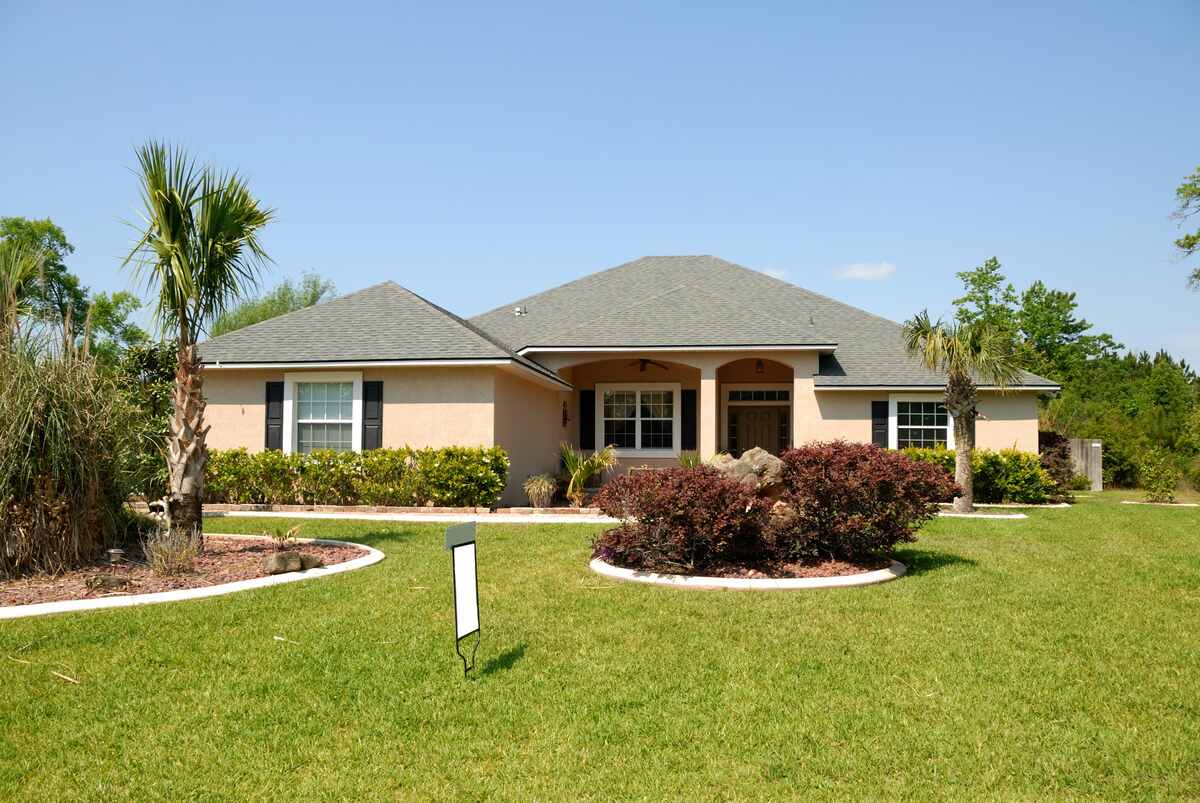
Living in beautiful Florida gives your property a good chance of feeling the impacts of a hurricane in any given year, especially in the coastal areas of South Florida and the Florida Keys, and even up to Jacksonville and the Panhandle.
Making your yard a safe zone is one of the best measures to protect your home and outdoor spaces. Here are 11 hurricane-resistant landscaping ideas for your Florida yard to help reduce the risks of fallen trees, flooding lawns, and flying gravel.
- 1. Replace Over-Mature and Hazardous Tree Species with Wind-Resistant Trees
- 2. Plant Trees in Groups Rather Than Individually
- 3. Don’t Place Trees Too Close to the House or Power Lines
- 4. Leave Enough Space for Roots to Grow
- 5. Prune and Trim Your Trees
- 6. Choose Salt-Tolerant Plants
- 7. Build a Retaining Wall
- 8. Use Only Soft Mulch Materials
- 9. Choose Heavy Hardscapes
- 10. Improve Drainage and Reduce Runoff
- 11. Install Sturdy, Heavy Fences
- FAQ About Hurricane-Resistant Landscaping for Florida
- Hurricane-Proof Your Florida Yard Today!
1. Replace Over-Mature and Hazardous Tree Species with Wind-Resistant Trees
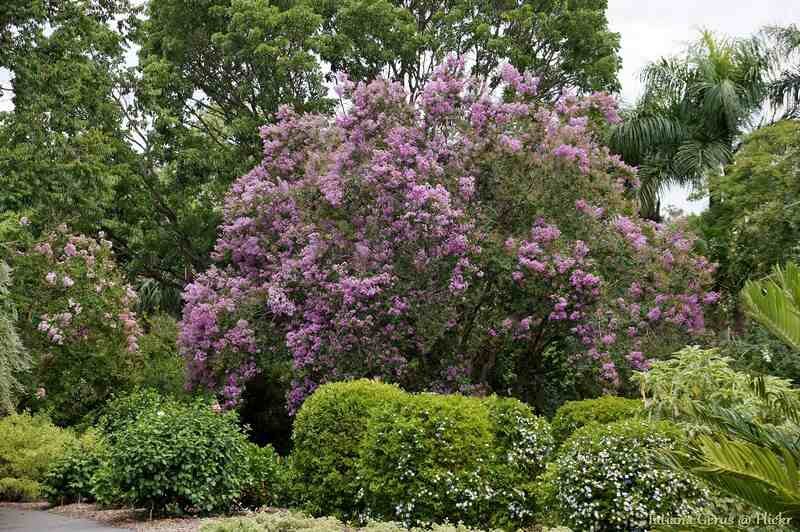
While most homeowners choose garden trees for their looks, wind resistance is an essential factor to consider in a hurricane-prone state such as Florida.
Trees with better resistance to high winds have deep and wide root systems. This makes them more stable and harder to be pulled out from the ground. For example, crape myrtle roots go 10 to 12 inches deep and spread up to 3 times wider than its canopy, while magnolia spreads its roots up to 40 feet wide.
Studies also show trees left standing after hurricane-force winds have denser and more flexible wood (for example, live oak wood has a 0.8 density on a scale from 0 to 1).
Here’s a list of trees to look for and species to avoid when planning a hurricane-resistant landscape project in the Sunshine State:
| Wind-Resistant Trees TO CHOOSE | Trees With Low Wind Resistance TO AVOID |
| Sand live oak American holly Wax myrtle Southern magnolia Sweetgum Crape myrtle Live oak Bald cypress Gumbo limbo | Sand pine Pecan Laurel oak Water oak Queen palm Australian pine Melaleuca Weeping banyan |
If you’re planning to add some palm trees, choose the following:
- Sabal palm (also known as Sabal palmetto) – Florida’s state tree
- Canary Island date palm
- Manila palm
2. Plant Trees in Groups Rather Than Individually
According to a study by IFAS Extension at the University of Florida, trees have more chances to survive hurricane-force winds if planted in groups, even with shallow roots. By group, they refer to 5 or more trees planted within 10 feet of each other.
Planting trees in a row is also an option but with less resistance than grouped trees. If you want a wind barrier to shelter your outdoor space during hurricane season, try making it out of 2 or more rows of trees or hedges.
3. Don’t Place Trees Too Close to the House or Power Lines
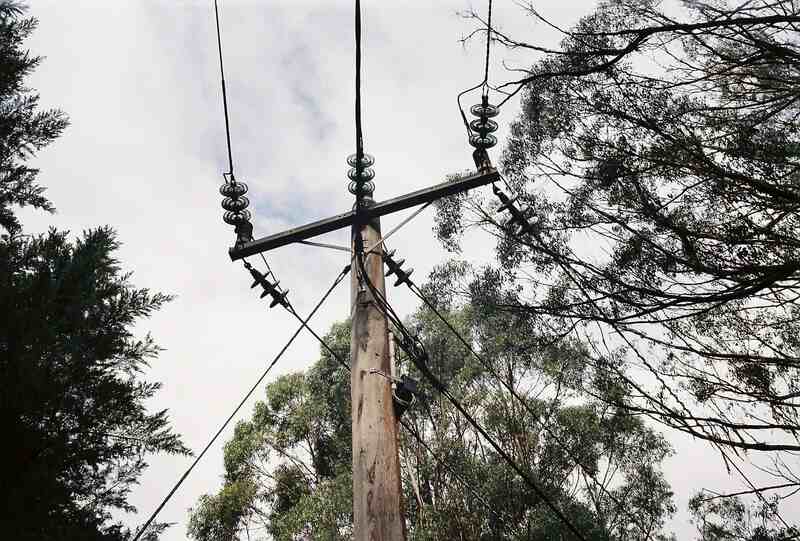
A large tree planted near the house is a real risk, even if it’s strong enough to withstand intense storm surges. Its branches can destroy the roof, break windows, and damage walls if they are close enough to hit or fall on.
Trees too close to power lines are also dangerous. They can cause outages and are a fire hazard since electrical sparks can light dry branches.
Are you working on a new landscape design for your Florida yard? Always consider where the trees might fall or what they could hit. Choose the safest placement, especially for giant shade trees.
What if you already have a tree dangerously close to the house? Call a professional to trim it back or cut it down. It costs about $315 to $700 to trim a tree and $385 to $1,070 to remove a tree that puts your home at risk.
4. Leave Enough Space for Roots to Grow
Trees have the best stability and resistance to the wind when their roots spread as wide or wider than the tree canopy and go deep into the grown. For this to happen, you need to plant trees at a proper distance from each other and from sidewalks, driveways, and other obstacles.
It’s also essential to protect tree roots when installing:
- Irrigation systems
- Ponds
- Deep flower beds
Mark an area of about five times the trunk diameter around the tree, and avoid digging deep in that zone.
5. Prune and Trim Your Trees
This study shows that adequately pruned trees have a 73% chance of surviving a hurricane in Florida compared with unpruned trees, which only have a 47% chance. To improve your trees’ resistance and stability, professional tree trimmers recommend:
- Keeping the canopies raised and thinned out a little bit.
- Checking the trees for weak spots, cracks, rot, fungus, and any other sign of decay and removing affected branches.
- Reducing the length of the branches competing with the main trunk.
Attention! If your tree’s diameter at breast height is larger than 24 inches or you want to prune a tree in the city right-of-way, you’ll need a permit in some cities.
6. Choose Salt-Tolerant Plants
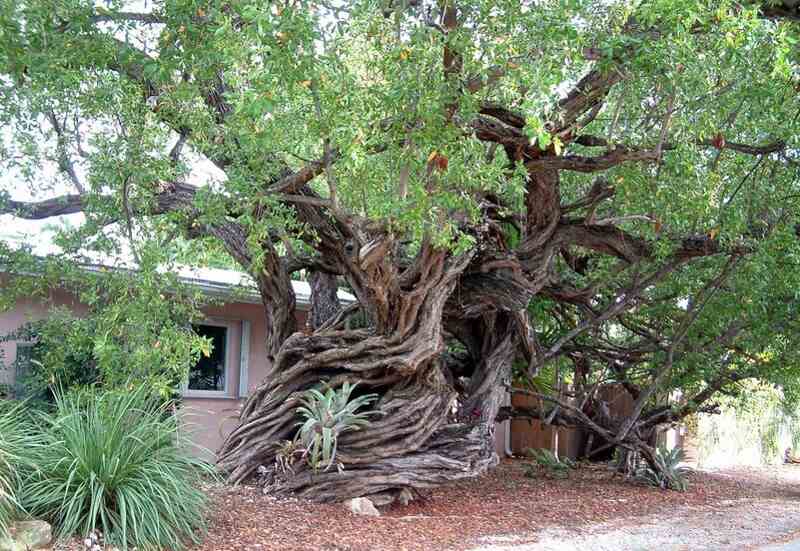
Saltwater intrusion is a concerning phenomenon around Florida, especially in the south and other coastal regions (Jacksonville, Sarasota, Tampa Bay, Clearwater, Fort Myers, and Pensacola, for example). The saltwater gets into the aquifer directly from the ocean due to the sea levels rising and fresh groundwater being depleted by excessive irrigation.
Some saltwater is seldom sprayed along coastal properties by wind storms and hurricanes. It absorbs into the soil and can accumulate in the ground at a toxic level. You need plants and trees that can thrive in a salty environment to keep a beautiful, resilient yard. The best choices are Florida native plants that can tolerate salt spray, such as:
- Giant leather fern (Acrostichum danaeifolium)
- Sea-purslane (Sesuvium portulacastrum)
- Sweet acacia (Vachellia farnesiana)
- Buttonwood (Conocarpus erectus)
- Wax myrtle (Myrica cerifera)
- Like Oak (Quercus laurifolia)
- Fakahatchee grass (Tripsacum dactyloides)
- Muhly grass (Muhlenbergia capillaris)
Find more information about the right plants and trees for your Florida yard at your local county Extension Office.
7. Build a Retaining Wall
Retaining walls are robust constructions made from concrete or rocks that can create a barrier to keep flood water under control. You can use retaining walls to protect the entrance to your home and plants vulnerable to standing water. Create raised sections in your yard and around the house to direct rainfall away from your home and toward storm drains.
You’ll need a landscape architect for this part of your garden design. They can evaluate drainage and slopes on your property to ensure the water flows in the direction you want.
8. Use Only Soft Mulch Materials
When the rain comes down in sheets over your beautiful Florida yard, proper mulching protects the local sandy soil from runoff and keeps precious nutrients in its deeper layers where plants can use them. But not all mulch is good for the Alligator State. Some can be dangerous.
In winds of over 100 mph, pea gravel and stones become projectiles flying through the air. They can break windows and hurt pets and people. To be safe, go for soft mulch materials, such as:
- Pine bark: It has a rich brown hue and is available in ground form or nuggets.
- Pine straws: They knit together and are less likely to wash away (sold in bales).
- Fallen leaves: Rake and use the ones from your property.
- Melaleuca mulch: It has a beautiful grey-brown color, and it’s long-lasting.
- Mixed hardwood: It’s made from scraped lumber, tree stems, and recycled palettes and has various shades of brown.
- Eucalyptus mulch is affordable and obtained from central and south Florida trees.
- Utility mulch: They are chips made from tree trimmings and other plants cleaned from power lines (may contain seeds).
- Cypress mulch: A long-lasting mulch sold as yellowish chips.
Pine, melaleuca, and cypress mulch can lower pH, so talk to a landscaper before buying to ensure it is suitable for your plants.
Pro tip: You can also use grass clippings left after lawn mowing as mulch. They are less appealing but are rich in nitrogen and free of charge.
9. Choose Heavy Hardscapes
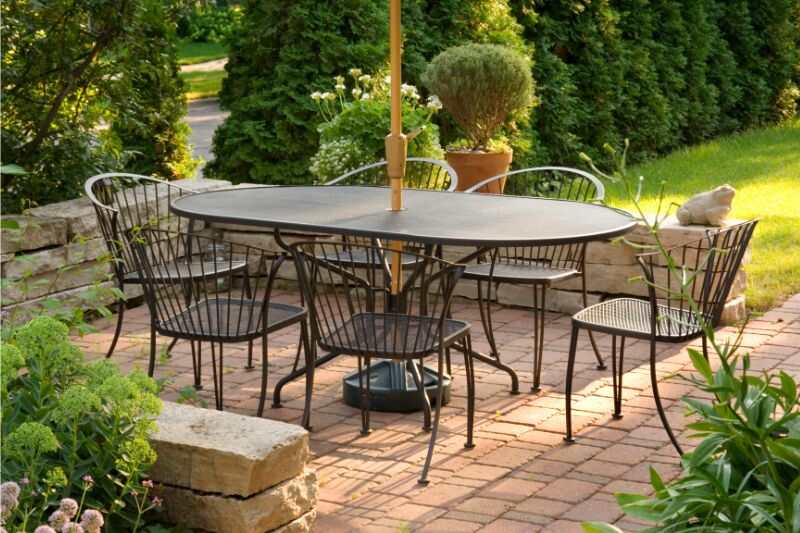
Hurricane preparedness involves more than just trees and plants in your garden. You must also ensure that every object in sight is secured or heavy enough to sit tight in high winds.
Choose sturdy, heavy stone, iron, or steel hardscapes. They are less likely to be taken away by wind. Second, anchor objects you don’t plan to move around much with concrete.
Planting a natural wind barrier to limit wind speed is also an effective solution. As for the small and light objects, when you expect strong winds to hit the area:
- Stack them together and put sandbags on to weigh them down (i.e. for chairs).
- Secure with bungee cords.
- Put them on their side (i.e. for small pots) or upside down (i.e. for tables).
- Bring them indoors.
10. Improve Drainage and Reduce Runoff
You can’t stop the rain from falling and storms from coming, but you can prevent rainfall from washing off beneficial topsoil or stagnating in the wrong areas of your yard. Here are some tips to improve yard drainage:
- Design a shallow rain garden.
- Fill in the low spots with topsoil and level the surface.
- Regrade the yard (the Florida-Friendly Landscape program recommends reshaping slopes with berms and swales to slow runoff).
- Aerate and dethatch the soil to improve water absorption. This also helps keep away common lawn pests, protecting the grass.
- Install a French drain.
- Replace any impervious surfaces with porous ones. For example, replace a concrete walkway with pavers or a plastic grid system.
- Place pavers in runoff areas to limit soil erosion.
- Keep gutters, downspouts, and storm drains clean and clear.
- Cut the grass regularly. Good lawn care keeps the grass healthy and improves water absorption.
11. Install Sturdy, Heavy Fences
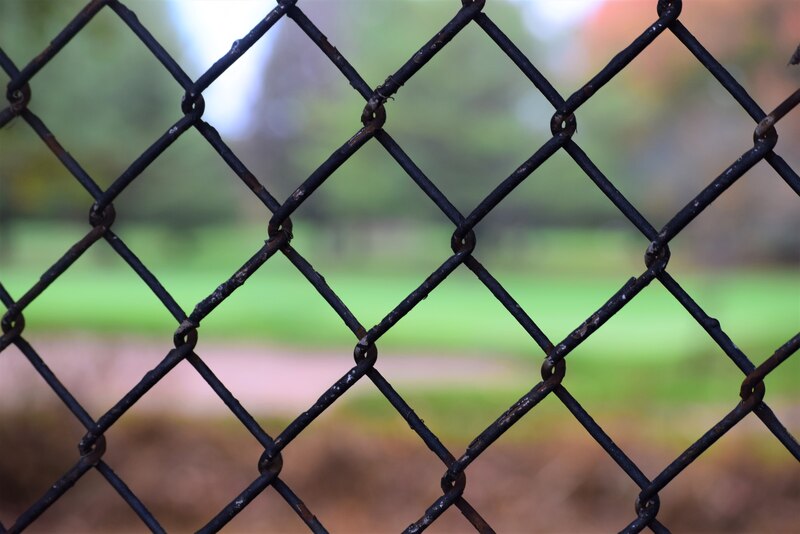
Chain-link is the best hurricane-proof fence because wind goes through it effortlessly. It’s also the cheapest type of fence. Compact privacy fences are a hard “NO” since they offer the perfect surface for the wind to blow on for lift-off.
Slate models are a good option since air currents can pass through them. Vinyl fences with spaces between vertical slats are also a good idea, and metal (aluminum, steel, wrought-iron) models are sturdy and resilient products to consider.
Think twice when it comes to wood. It looks beautiful and seems solid, but it can get easily crushed by large debris or fallen trees. It also deteriorates in time due to moisture and loses strength.
FAQ About Hurricane-Resistant Landscaping for Florida
To prepare your yard for upcoming tropical storms or hurricanes, go through the following steps:
• Turn off pool equipment, cover it with plastic, and add sandbags to keep it in place.
• Bring the grill in, but leave the propane tank outside and secure it.
• Turn tables upside down, stack chairs, and use sandbags to weigh them down.
• Lay large potted plants on their side and place them tight together.
• Bring small and light items inside.
• Clean the gutters, downspouts, and storm drains.
• Prune trees and shrubs away from home and get rid of debris.
• Remove dead trees and shrubs and broken branches.
• Turn the irrigation system off. Always check soil moisture before watering the lawn after heavy rain.
• DO NOT fertilize the lawn if you expect heavy rain.
Floridians looking to create hurricane-resistant landscapes bet on wind-resistant trees such as:
• Sand live oak
• American holly
• Wax myrtle
• Southern magnolia
• Sweetgum
• Crape myrtle
• Live oak
• Sabal palm
Yes, hurricanes can pick up small rocks like gravel or pebbles and break the windows of your home or car or damage the building’s siding.
Hurricane-Proof Your Florida Yard Today!
Living in a hurricane-prone area means you can’t leave anything to chance. Planting wind-resistant trees, improving soil drainage, building retaining walls, and using soft mulch and heavy hardscapes are essential improvements. Need help to figure out where to start?
Contact an experienced Florida landscaper near you and hurricane-proof your yard today! Or search directly for a lawn care service in your city using our local pages for Jacksonville, Miami, Tampa, Orlando, and St. Petersburg.
Main Photo Credits: Pxhere